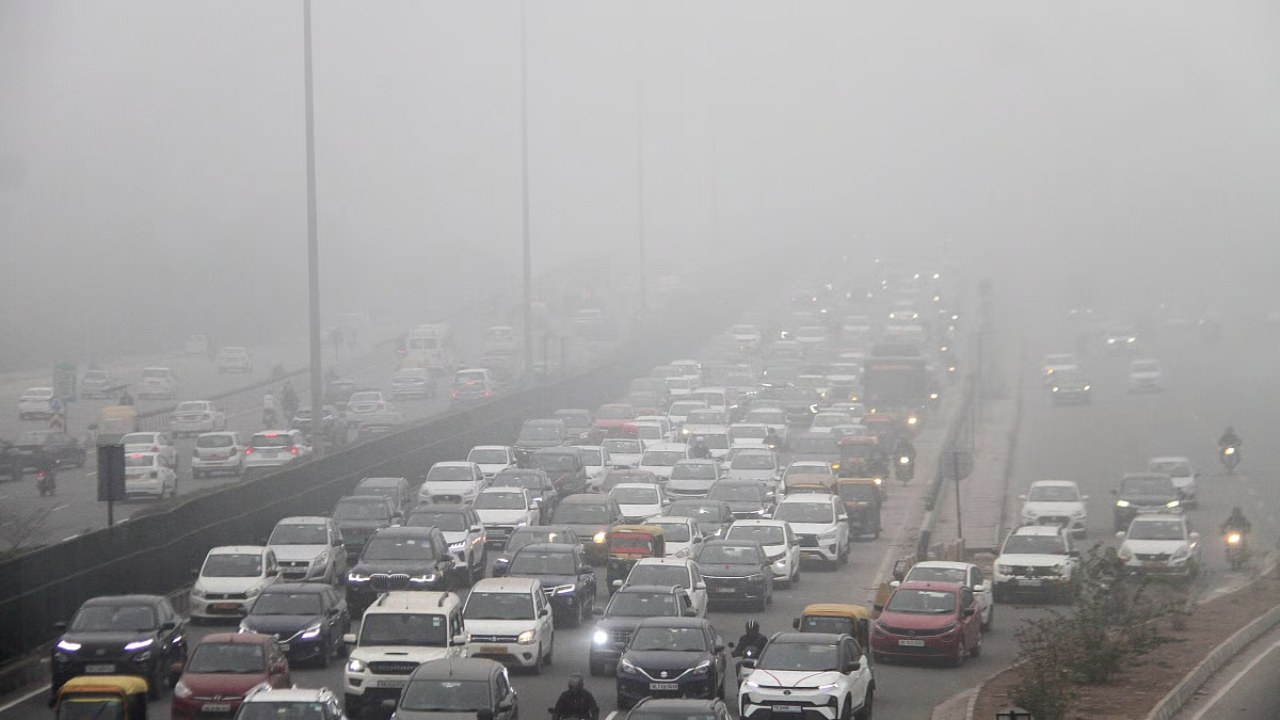Delhi Weather Update: The weather in the national capital, Delhi, took a drastic turn on Saturday morning. The city was shrouded in a thick fog, and the Air Quality Index (AQI) dropped to 257, which falls in the “poor” category. A calm morning was suddenly engulfed by a mix of haze, cold, and pollution, leaving the capital once again in a respiratory crisis.
Fog and Pollution Wreak Havoc: Breathing Made Difficult
Visibility on Delhi’s roads was so low in the morning that it was difficult to see even a few meters ahead. Vehicles moved at a snail’s pace, and traffic was severely affected. Smoke and dust in the air were irritating people’s eyes and throats.
According to the Central Pollution Control Board (CPCB), air quality is continuously deteriorating. Health experts have warned people to avoid going out unless absolutely necessary and to wear N95 masks when venturing outside. A senior lung specialist at AIIMS said, “This level of pollution is dangerous even for healthy individuals, especially children and the elderly.”
A Cold October Morning: The Lowest Temperature in Two Years
Delhi recorded its coldest day in two years this October. The minimum temperature was 17 degrees Celsius, slightly below normal. The maximum temperature was 32.3 degrees Celsius, about 0.4 degrees above average.
According to the India Meteorological Department (IMD), this cold wave is due to cold winds blowing from North India and seasonal changes. This rapid change in weather signals the arrival of winter for residents of Delhi-NCR.
Cold in the North, Storms in the South: The Dual Face of India’s Weather
While cold winds and fog have swept across North India, storms and rain are beginning to affect South India. Heavy rain accompanied by strong thunderstorms and lightning is expected in Bengaluru and the surrounding areas. Weather experts say this is a period of “post-monsoon transition,” during which different parts of India are experiencing starkly contrasting weather conditions.
Pollution expected to rise further
The Central Pollution Control Board (CPCB) and the central government’s Air Quality Early Warning System (EWS) had already warned that pollution levels could reach the ‘very poor’ category by Saturday.
Air quality will fluctuate between the ‘poor’ and ‘very poor’ categories for the next few days. This combination of fog and pollution has reduced visibility so much that traffic disruptions have become common in the morning.
Cold and rain increase in the mountains
Meanwhile, temperatures have dropped sharply in the hilly areas of North India. Light to moderate rain in Himachal Pradesh has increased the cold. Tabo in Lahaul-Spiti recorded a minimum temperature of minus two degrees Celsius. Rain and hailstorms were reported in Shimla, Kangra, Sundernagar, and Bhuntar.
The Meteorological Department has stated that a new western disturbance will affect the western Himalayan regions around October 27, which is likely to increase rain and snowfall in the upper reaches.
Clear day in NCR, fog persists in the morning and evening
Areas like Noida, Ghaziabad, Faridabad, and Gurugram will experience clear weather during the day today. However, light fog may persist in the morning and late evening. The Meteorological Department has not issued any alert for these areas.
Weather Trends in Other Metropolises
Strong winds and thunderstorms are expected in Mumbai today. Kolkata is currently experiencing clear skies, but heavy rain is expected between October 28 and 30. Chennai will experience normal weather today, but a warning of heavy rain has been issued for the next three days. Bhopal may also experience light rain and thundershowers, while normal weather is expected in Lucknow, Jaipur, Patna, and Ranchi.
Cyclone Activity in the Arabian Sea and Bay of Bengal
The Meteorological Department has reported that cyclonic conditions are developing in both the Arabian Sea and the Bay of Bengal. The depression over the east-central Arabian Sea will move northward over the next 24 hours, while the depression over the Bay of Bengal could intensify into a cyclonic storm by October 27.
A cyclonic storm alert has been issued for the Andaman and Nicobar Islands, and heavy rainfall is expected over the next few days.
Major weather changes continue in the country
Currently, Delhi and the plains of North India are facing the double whammy of fog and pollution, while cold and rain continue in the hilly states. Cyclonic activity is intensifying in the southern and eastern coastal areas.
Overall, India’s weather is experiencing various variations these days—cold winds and fog in some places, rain and storms in others. Experts believe that this fluctuation will continue for the next few days, and the country may face a “double climate crisis.”
